The 23/24 Transalp Pro revamp adds more muscle, durability, and skiability for all terrain, especially steeps.
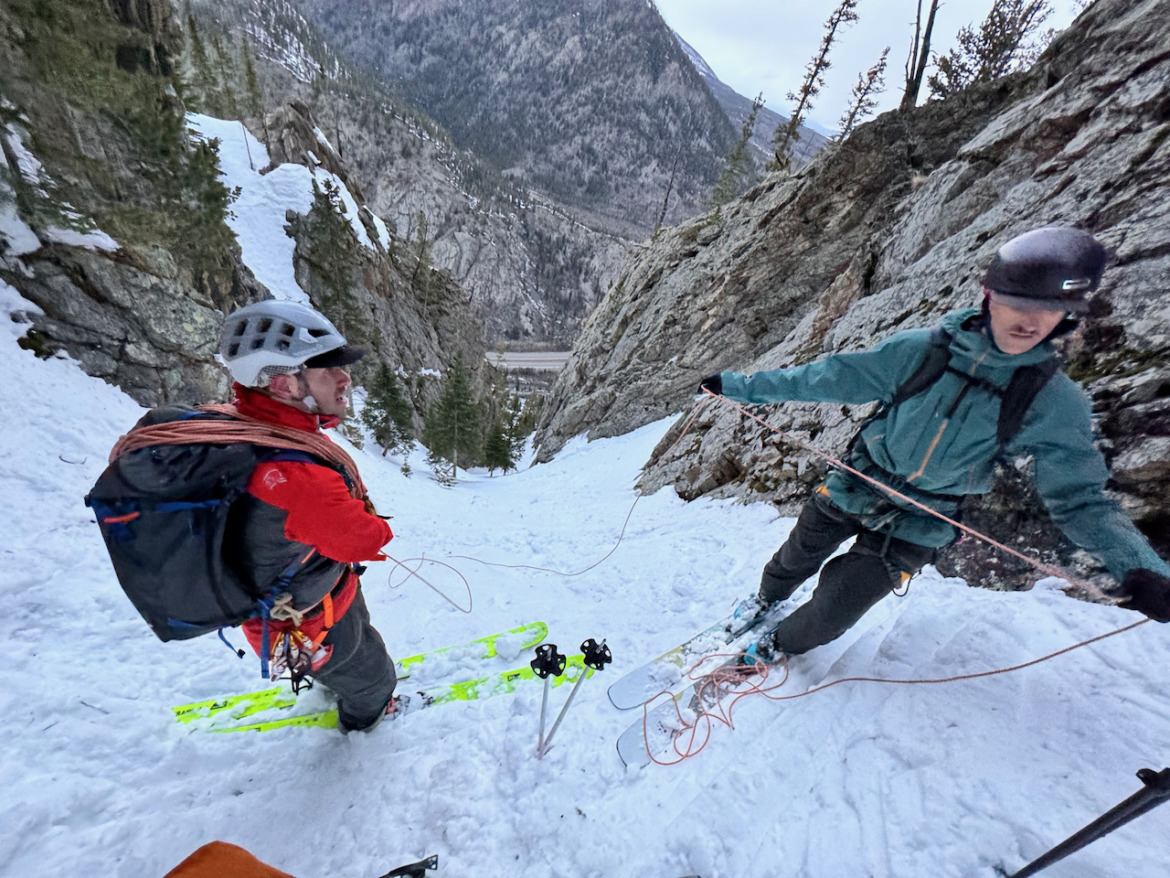
Photo: Pete Van Dyke
My touring partner and I botched the timing on a morning mission in Colorado’s Gore Range towards the end of last season. After booting up the peak’s steep, 1,400-foot west face to enjoy the sun-bathed slope on the other side, we looked down over our descent. The East Face was 2,000 vertical feet of ice after a very windy, much-cloudier-than-expected morning. But that’s dawn patrol – you take what you can get and keep moving.
So we dropped in and scraped down it. Fortunately, I brought a pair of blades built for the occasion–Fischer’s new-for-23/24 Transalp 92 CTIs, a pair of skis I’ve been particularly excited about this season and last. For being a sheet of ice, I felt dialed and my teeth didn’t chatter out of my face.
I’ve been impressed by the highlighter yellow Transalps 92 CTIs, not just for their technical and hard snow prowess but also for their character in most of the varied backcountry snow that I’ve thrown them into.

Transalp 92 CTI Weight, Shape, and Build
Though I didn’t manage to click into Fischer’s previous generation of touring skis, my ski touring partners assured me that they were nothing to write home about. Fischer took it back to the drawing board with their newer lineup – the new Transalp family are the high-quality Austrian touring skis that you’d expect from the 101-year-old brand.
The touring-oriented Transalp family includes several different skis: the Transalp RC (Skimo racing), Transalp 86 CTI, Transalp 92 CTI, Transalp 98 CTI, and the Transalp 105 CTI. The lineup also includes lighter, stiffer, highlighter yellow “Pro” versions of the 86 and 92. I’ve been skiing on both the Transalp 92 CTI Pro and the Transalp 98 CTI, but this review will focus on the former.

Despite beefing them up in the core, Fischer managed to cut weight across the collection. The version the 92 replaces—the Transalp Carbon 90—weighed in at 1285 g in the 176 cm length. The new 176 cm goes down slightly to 1,260 g. They put the scant weight to good use. The 92 CTIs sport a full wood core milled out to save weight, carbon stringers, stout ABS sidewalls, and an externally visible 0.5mm fork-shaped Titanal sheet in the middle of the ski (CTI stands for Carbon Titanal). It’s an all-business build. The Transalp 92 CTI Pros are stiff, especially in the tails. And that comes with a strong underfoot camber that’s ready to bite into ice.
The 92 CTI Pros’ sidecut is relatively generous at 124-92-111 and similar to their predecessor’s 125-89-108, providing a medium length 21m turn radius in the 176cm length. That shakes out to a shape and surface area that lends itself to a wide range of terrain and snow conditions (more on that below), but especially steep, techy conditions.
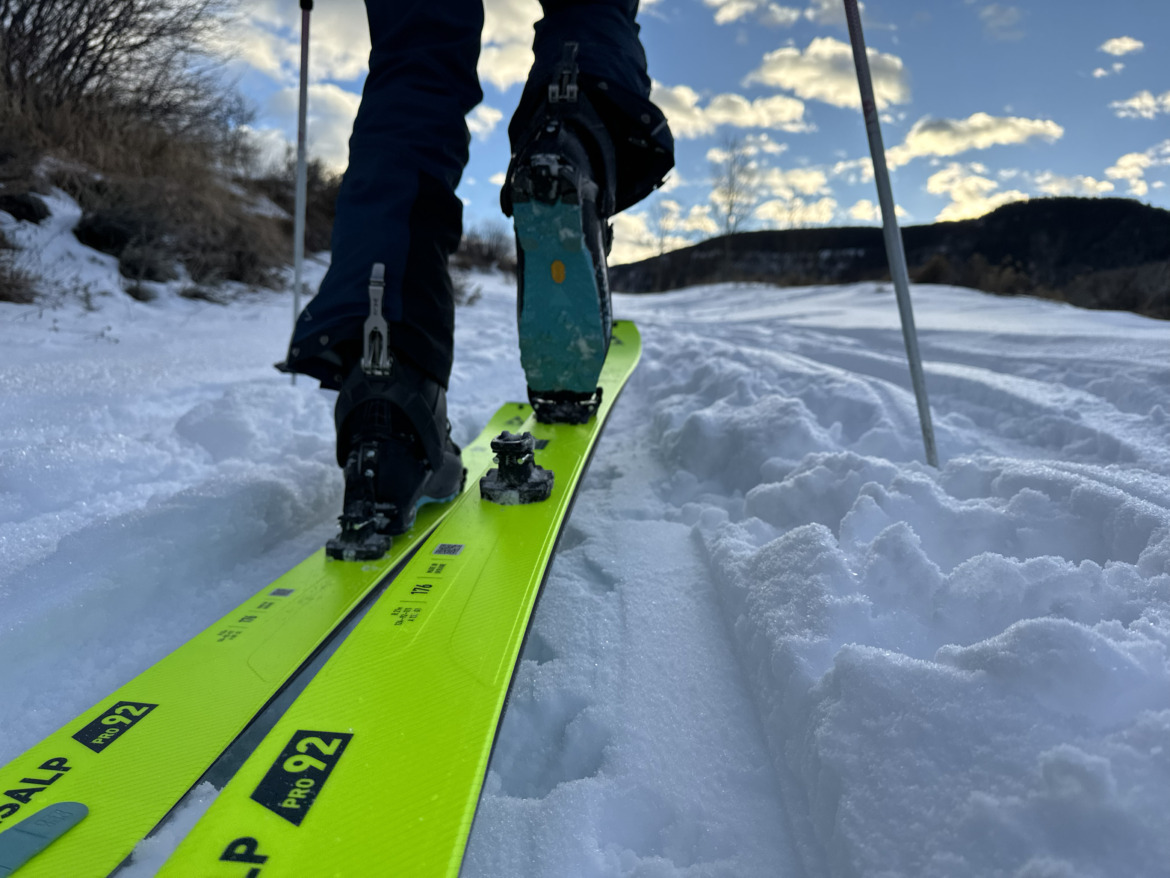
Ski Choice and Setup for the Fischer Transalp 92 CTi Pro
I waffled back and forth between the 176 cm and 183 cm lengths and eventually gave in to the shorter for maximum maneuverability and light boot skiability. The Transalps are also available in 162 cm and 169 cm lengths. At 185 cm tall, 85kg, it was the right choice for me but also about my lower limit for non-race backcountry skis. If I had fewer skis in my quiver, I’d size up to the 183 cm length without hesitation.
Last season, I paired the skis with Scarpa’s lightweight F1 XT and occasionally the Fischer Transalp Carbon Pro Boots. Despite being such small, lightweight skis, the much more powerful Fischer Transalp Carbon Pro boot didn’t overpower them. In fact, they were a decent match, especially when I wanted to push the speeds in harder conditions and put a little more muscle into the edges in steep ice. This season, I’ve been swapping in La Sportiva’s new Kilo boot, whose softer lateral flex mellows out the Transalp’s strong edge and camber.
I mounted the Transalps with Marker’s Alpinist 12 brakeless bindings (270 g each) at the recommended mount point, which have been an excellent pairing. With Fischer’s own matching skins, the per-foot weight lands at a very light-but-solid 1,896 g (not including boots). The recommended mount point felt forward relative to other skis in this class like the Blizzard Zero G 95 and the Black Crows Orb Freebird. That came with a few pros and cons.
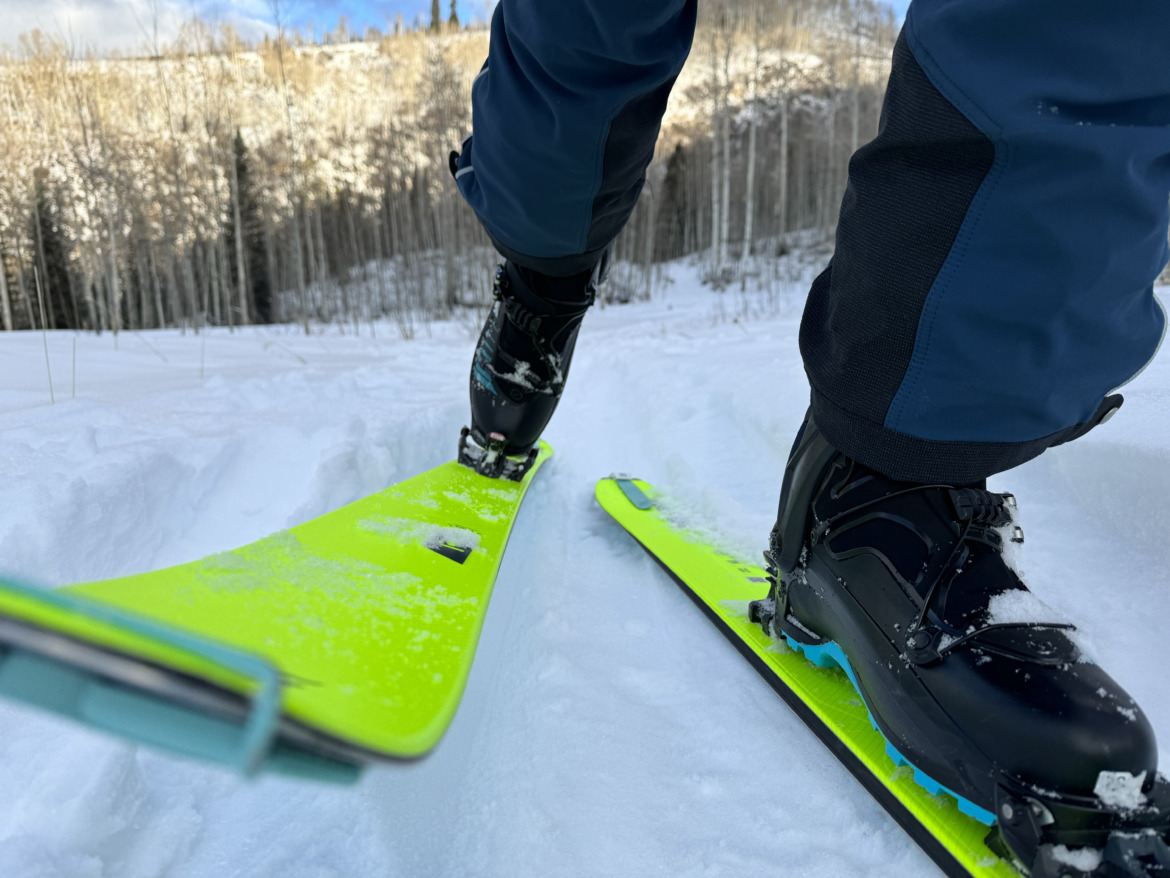
Touring
The Transalps fly uphill given their scant weight. I was pleased with the shorter length when I started kick turning, too, despite having more tail to clear thanks to the more centered mount. The torsional strength and solid edge kept them firmly planted on icy sidehills, too.
Fischer included a set of their proprietary skins with the skis, though they’re sold separately. They employ a small metal flange at the tip that hooks into the hole in the Transalp’s tip. They’re simple, quick to deploy and rip, and most importantly, very secure. With 70% mohair, 30% nylon, they straddle the fast gliding and durable categories. They’re not quite as slick as Pomoca’s Free Pro, but their durability is certainly better so far – they’re analogous to Pomoco’s blue Climb Pro S-Glide skins.
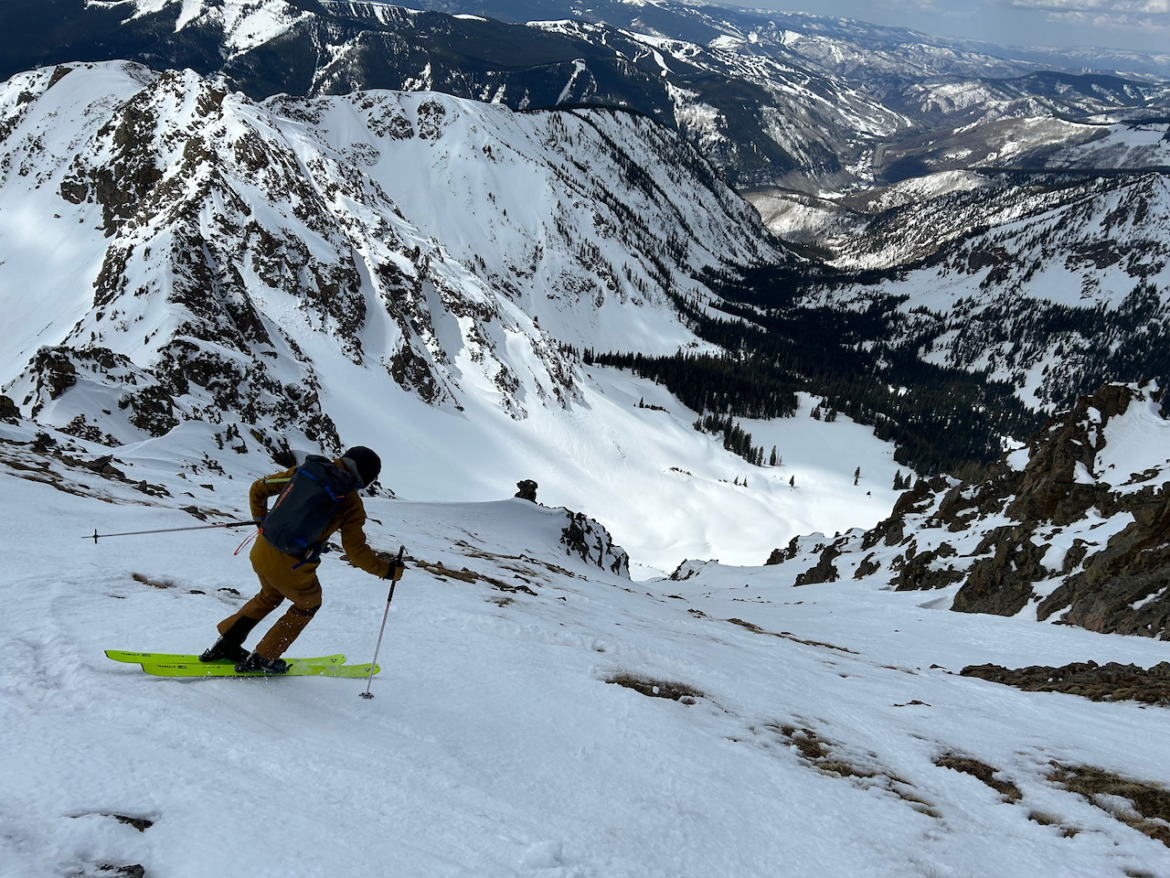
Skiing the Transalp 92 CTI
What They’re Best For
I skied the Transalps in every type of snow and terrain that Colorado offers over the last season and a half. What kept sticking out to me about the Transalps was their precision, which comes from their steadfast underfoot stiffness, powerful camber, and torsional strength, as well as their fairly progressive forward mount. In technical, steep terrain, they’re easy to whip around and jump turn – they land with purpose, and the edges bite. It’s remarkably confidence-inspiring and it made steeper lines feel much friendlier. I felt composed on the steep ice that’s omnipresent in the choke of our local roadside coin slot couloir and others like it. I rolled my ankles and knees uphill and the edges locked in – no slop, no sliding, ready for the next turn.
Limitations
Their technical precision comes with a few tradeoffs for daily ski touring. For one, they have a speed limit when conditions aren’t fluffy or at least consistent. When I was pushing the speed in the backcountry, it was easy to feel like I was on the verge of going “over the bars.” Not because the shovels folded – they’re plenty stiff – but because there’s so little ski in front of the binding comparatively (and yeah, I was skiing a shorter version than I typically would in soft snow). The similarly shaped though more traditionally mounted Black Crows Orb Freebirds had more of a freeride character and felt more confident at speed in most terrain.
The other flip side to their technical prowess is their pretty not-fun character in breakable crust and crud, where most lightweight skis also suffer. Strong camber and breakable crust don’t play nicely together. And despite having a nice taper and a little bit of early rise on the tail, there’s a lot of it there and it’s fairly stiff. That means they don’t slide and release super easily, and it’s easy for the tails to feel like they’re in charge in these conditions. The solution was to slow down and make more intentional turns instead of trying to blast through everything. They’re a precision tool, not a freerider – trying to ski harder doesn’t necessarily make them ski better.
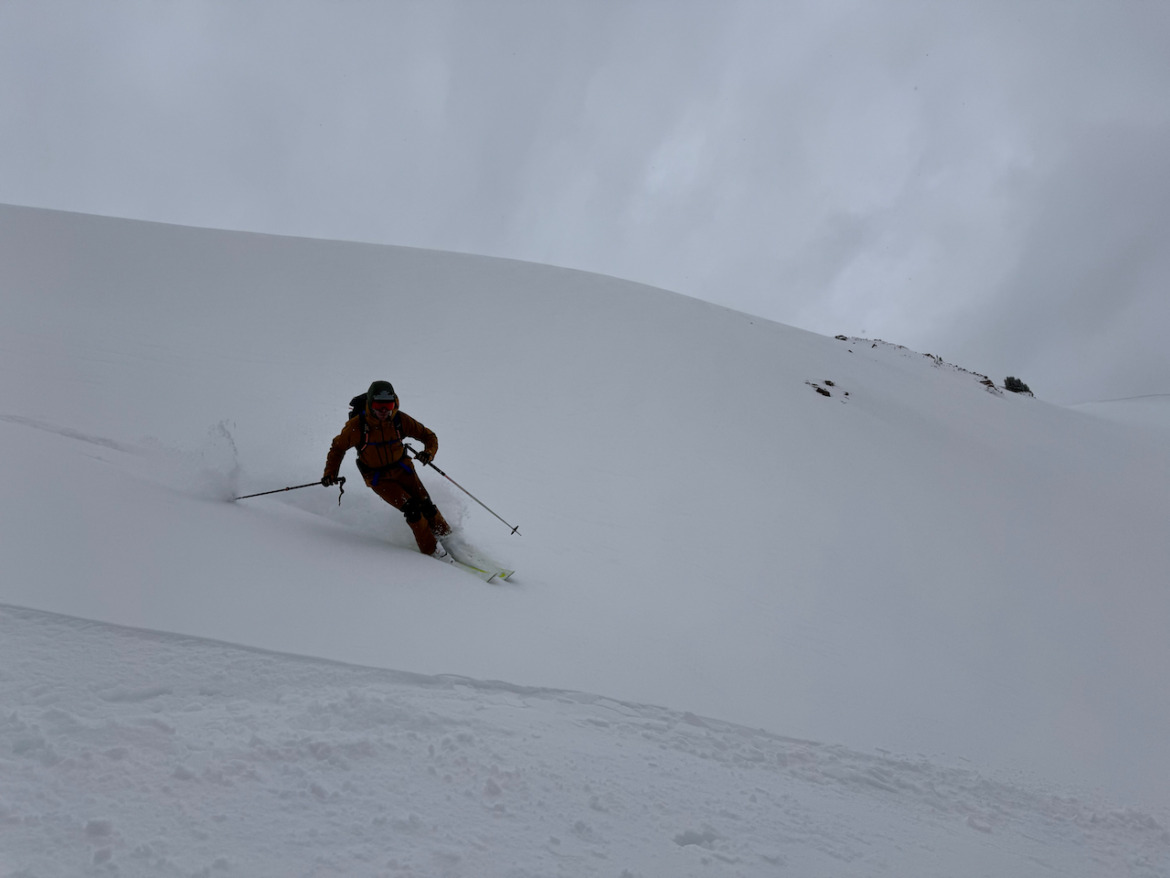
Soft Snow Performance
With a very modest rise fore and aft, big camber, and forward mount, I wasn’t expecting the Transalp to excel in powder or soft snow. But they actually did fine. I wasn’t floating near the top, but the skis remained lively, mostly intuitive, and didn’t feel like a chore. With so much tail, it wasn’t as easy to just lean back to keep the tips up. It took a more active, centered stance to maintain composure, and that meant the tips rode below the surface 80% of the time, popping up for air in higher speed turns. The drag from powder on my boots meant I was never flying through the powder, but powder is powder – it’s all pretty dang fun. These aren’t skis that “float better than you’d expect from the width,” like some others with more generous rockers and sidecuts (like ZAG’s UBAC 95’s), but again, more than serviceable in these conditions. Even with a quiver of much wider powder skis, I ended up grabbing these more often than I’d expect for the weight savings and only slight performance tradeoff.
I pushed these skis to their limit on the resort and, frankly, they were a lot more fun than most touring skis. It was a dust-on-crust kind of day, and what I was really after was an understanding of the depths of Scarpa F1 XT boots’ flex. These skis helped me find it. I was able to carve deep arcs in hardpack and on-piste. I pushed them about as far as I felt safe pushing tech bindings and little boots. Oddly, these wouldn’t be the worst resort carvers out there. Ski resort fitness lappers take note.
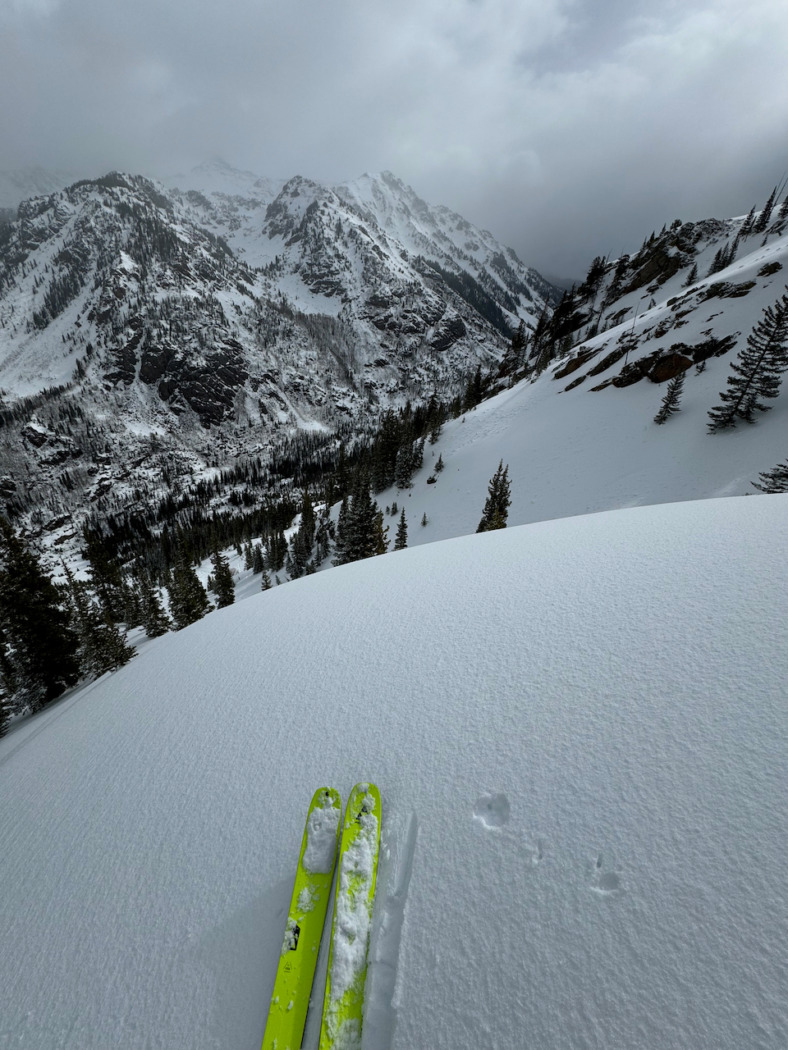
Comparison with Other Light, Stiff, Narrow Skis
The Fischer Transalp’s specs are remarkably similar to the 90 mm-waisted Black Crows Orb Freebird that I’ve been skiing on for the past three seasons—highlighter yellow color and dimensions at 127/90/112 and 1480 g (178 cm length). The biggest difference comes from the mount point – the Orbs are more traditionally mounted (farther back), softer, sport more rocker, and thus ski slightly more intuitively through most snow conditions. The Transalps feel more stable, damp, precise, and they jump turn more effortlessly. They also hold a firmer edge on steep ice, though the Orbs are no slouch in this regard – I’ve trusted them in the plenty of steep, icy descents.
If I were to plant the Fischer Transalp CTI Pro, Blizzard Zero G 95, Black Crows Orb Freebird, and the WNDR Nocturne 88 on a spectrum from precision specialist to freerider, they’d land in that order. The Transalps are what I’m reaching for on long days that might get a little scary and night laps at the resort. If steep tech or resort fitness laps don’t tickle your fancy, but you’re looking for a skinnier ski, check out the latter half of that spectrum.
My ski partner, Eddie, who has also been sporting the highlighter yellow 92 CTI’s for the last year had a very similar take when I asked: “They feel super solid underfoot while still being lightweight. Confidence-inspiring to say the least. You can drive an edge in them and they give really good feedback. I have noticed that if you end up backseat you’ll feel the tails pushing you around a little. Great on hardpack and doable in powder but not designed for it. Still get a little of the knee instability when you’re trying to drive them through crust as they do have a skinnier waist. Not a quiver killer, but my go-to ski as of now for everything except deep days and days after a sun crust has formed.”
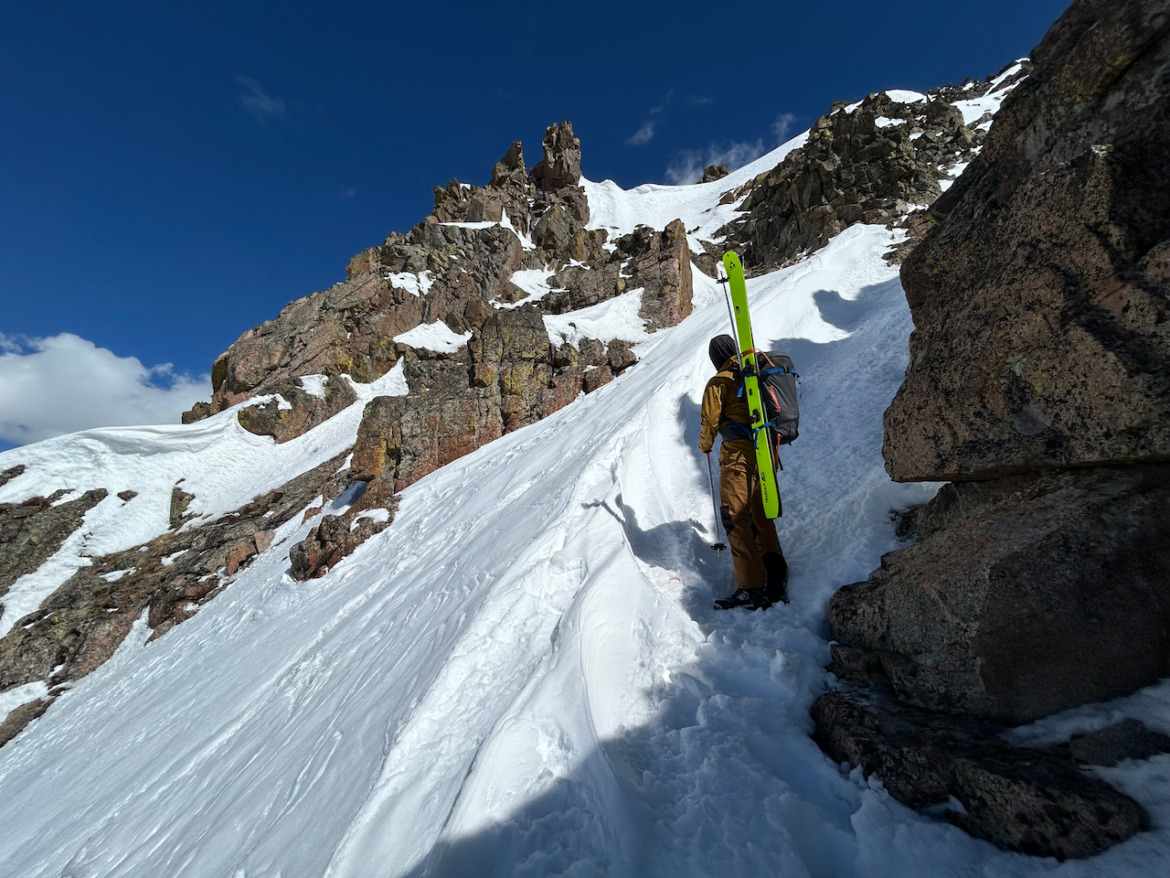
Conclusion
Where does the Fischer Transalp 92 CTI fit into a ski quiver? For skiers that get excited by spring snowpacks, steep descents, crampons, and ropes, they’re a solid steep skiing specialist – they’re precise, have exceptional torsional stability, and jump turn on a dime. They’re different but on par with the Blizzard Zero G 95 in this regard.
Fischer isn’t shy about this niche user group in the first sentence of the marketing copy: “Steep, icy, difficult. The Transalp 92 CTI Pro is designed for precisely these conditions. An extended titanal insert provides maximum stability in the harshest conditions.”
A quiver of one? The Transalps 92 CTI’s wouldn’t be my first choice. Even for skinny ski aficionados, there are better skis for day-in, day-out touring that are more versatile for the rest of the season that can still handle steep descents. Both the Fischer Transalp 98 CTI’s and Black Crows Orb Freebirds are great examples.
Could they be a hair easier to ski with a few small tweaks? Sure. But then they’d lose some of that steadfast precision that makes them stand out from the growing crowd of skis in this class. So, while the Transalps might come with a learning curve for intermediate skiers and may not be the absolute most fun ski in all-around backcountry conditions, they do what they’re designed to do really dang well. They’re what I personally want from my ~90mm underfoot ski, and I think a lot of folks will agree, especially if steep, technical descents and resort fitness laps are in their seasonal cycle.
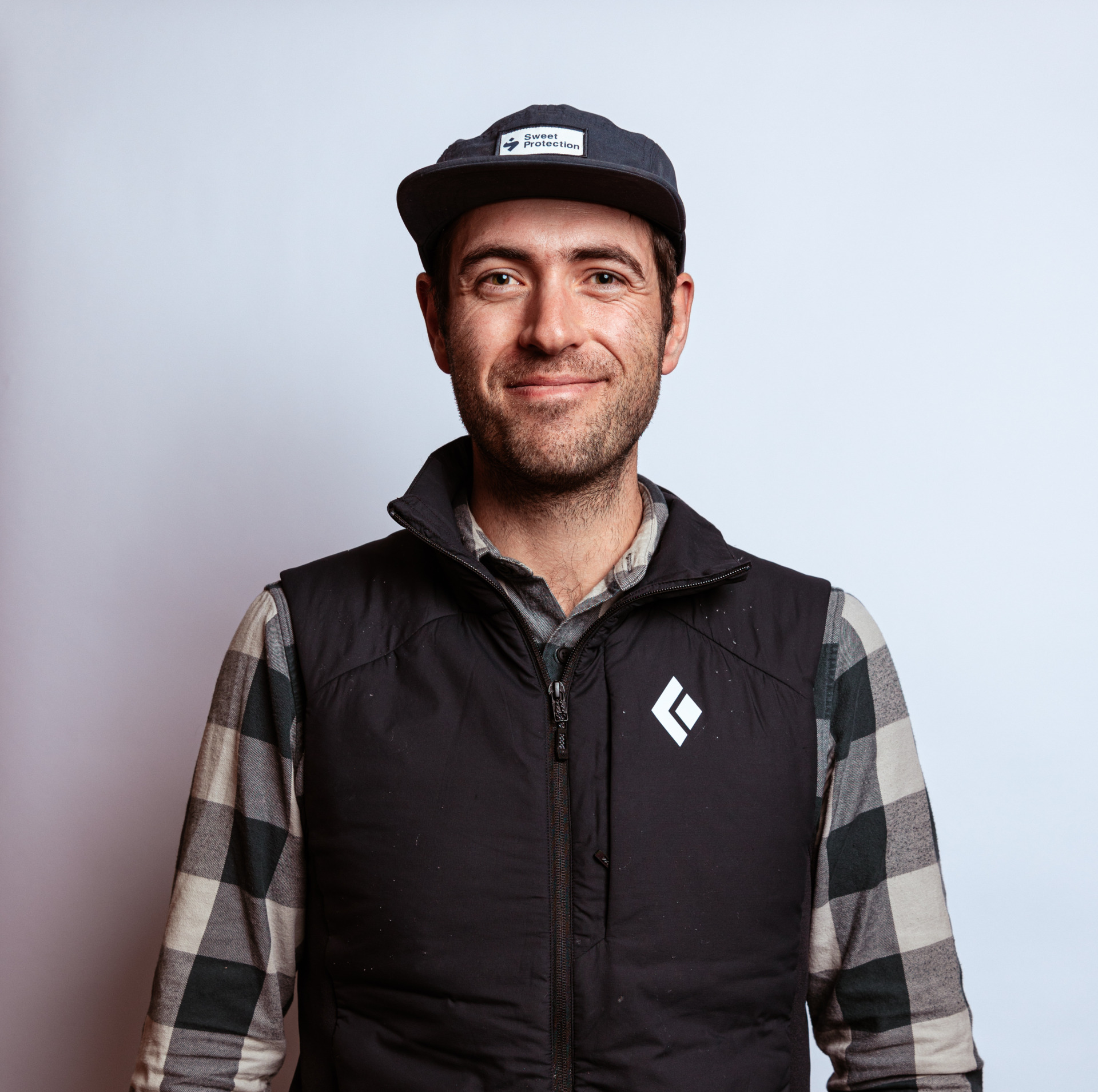
Bergen Tjossem is a ski fanatic, conservation professional, and nature nerd based in Vail, Colorado. His life and career have centered around protecting the natural environment and public lands that raised him, but as Ed Abbey put it, “It is not enough to fight for the land; It is even more important to enjoy it.” So when he’s not working his day job, you’ll find Bergen ski touring before dawn, ice climbing in the dark, running trails until his legs fall off, skiing 13er’s with his friends, or making the world’s best pizza with his wife, Rachel. You can find him on Instagram.

2 comments
Titanal isn’t titanium. It’s an aluminum alloy with zero titanium in the mix. Titanium would be a horrible material to drill into for mounting bindings, and it’s considerably heavier than aluminum.
Great catch, typo fixed.